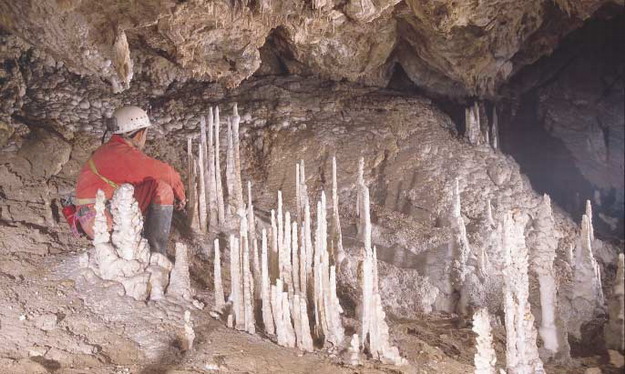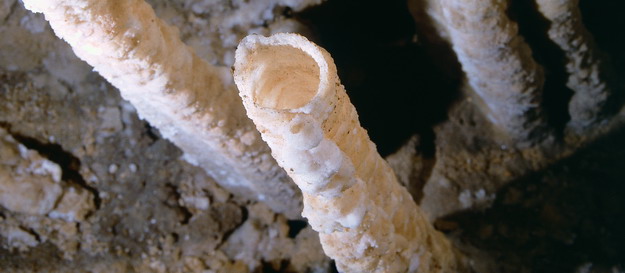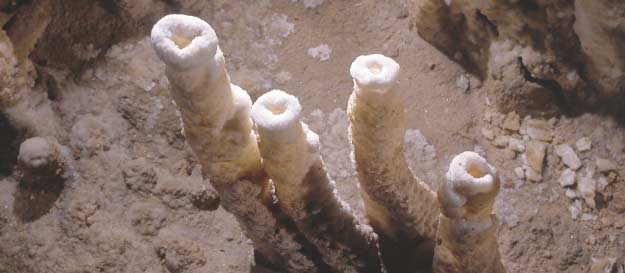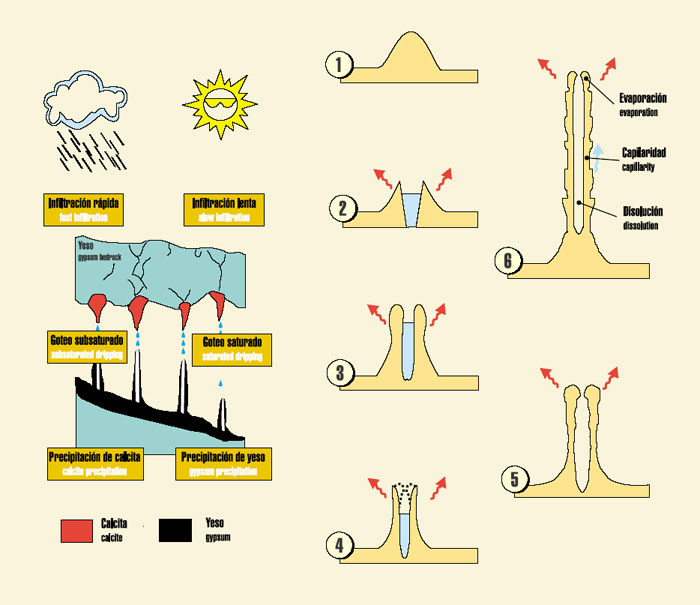
Spectacular examples of hollow stalagmites in the Galeria del Bosque (Covadura System Cave)
Hollow stalagmites are one of the most ostentatious speleothems in the Sorbas Gypsum Karst, and they have not been described anywhere else. Their formation is based on the simultaneous precipitation and dissolution of gypsum, but with the peculiarity that their origin is linked to stalactites made of calcite (calcium carbonate).
Examination of these stalagmites shows that a central orifice runs from apex to base. How can the hole and the stalagmite be formed at the same time? The answer in not complex: precipitation of calcite on the stalactites means that the dripping water remains subsaturated in gypsum, so the continuous central orifice in the stalagmite is maintained: a veritable mineralogical jewel of nature (Figure 13).

Spectacular examples of hollow stalagmites in the Galeria del Bosque (Covadura System Cave)


Detail of the gypsum hollow stalagmites

Figure 13